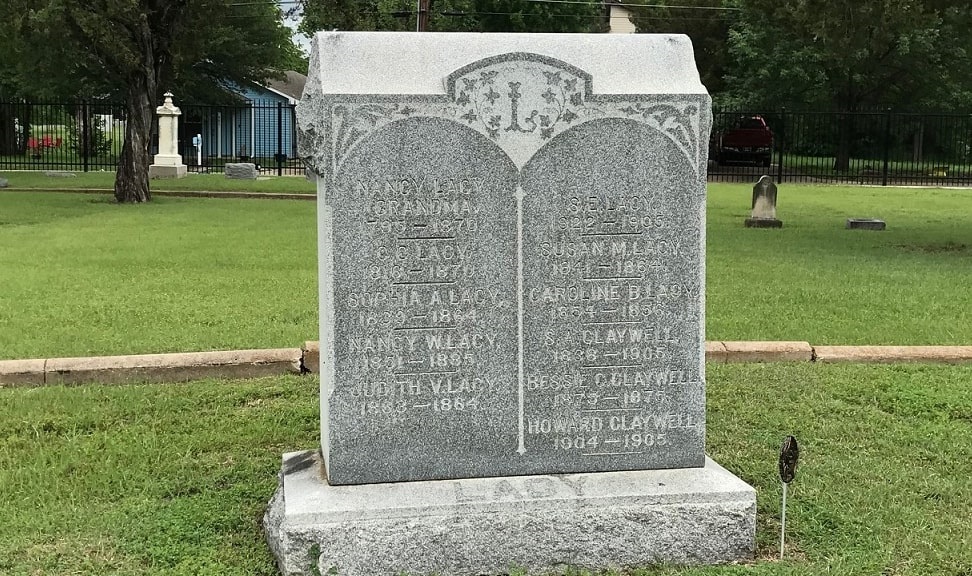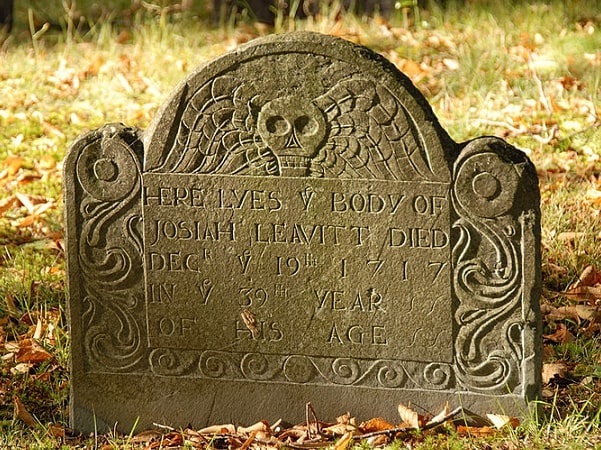Introduction: In this article, Gena Philibert-Ortega writes about the family history information and clues gravestones provide. Gena is a genealogist and author of the book “From the Family Kitchen.”
It’s always a great feeling to find an ancestor’s burial site. It provides us with information to verify an important fact in our quest to document our family history: we expect to find at the very least a name and death date or age on a gravestone. But what other genealogically relevant clues can that gravestone provide?
Before we look at some specific markers, it’s important to consider a few things about researching gravestones. First, you have no idea who provided the information for that marker unless you have seen the receipt for the purchase or some other record. So, it is undetermined who the informant is, which means that the person who provided the information could have been incorrect. We don’t know how much they knew and how they knew it. In addition to that, the person who carved the marker could have made a mistake. Ultimately, we need to verify all of the information we find on a gravestone. We do that with original records such as a birth or death certificate.
Also, it’s not a given that a gravestone was added shortly after death. The grave could have been unmarked for some time. And I have seen cases where the grave was marked twice due to the destruction of the original stone, the stone being stolen, or someone decided to remark the grave.
There’s no doubt that gravestones can provide additional clues about our ancestor’s life beyond their birth and death date. We should carefully study them and analyze what they tell us (or not tell us).
The following are just a few categories of information you might find on a gravestone.
Family Members
A gravestone may include much more than one name. You’ve probably seen gravestones that list a husband and wife. A child may be listed on a gravestone with his or her parents. A gravestone may also include the names of several generations of family members.

Don’t forget to also look at nearby markers for other family members. In some cases, you might find a married couple’s parents or siblings. A family may have bought a plot with a number of graves and offered them to other family members.
On some gravestones, family relationships are obvious because they are literally spelled out – and in others, it might take more detective work because of differences in surnames.
Fraternal Order Membership
A fraternal order membership might be information provided on a stone. Fraternal order symbols and initials might give a hint to organizational membership that should be further researched. Not all records may be available, but at the very least look into the history of that order in that place and time. Local history books and historical newspapers can help with that research.
You probably know that a compass and square or a compass and square with the letter “G” indicates Masonic membership. But there are other symbols to be aware of. Consult reference books or Google to find answers.
One example that you may come across is a stone that looks like a tree trunk. This might indicate membership in the Woodmen of the World fraternal society. Not all Woodmen of the World gravestones look like a tree; they can be much simpler and perhaps just indicate membership with the letters WOW.
Religious Affiliation
Religious affiliation might be ascertained from a gravestone, whether it be a scriptural verse that gives clues to a Christian affiliation, symbols found on the gravestone, or the shape of the gravestone itself.
Consider this marker with the initials IHS. What does IHS mean? According to online dictionaries, it is a Christian symbol for Jesus Christ. The Collins Dictionary states: “a contraction derived from the Greek word ΙΗΣΟΥΣ, Jesus, used as a symbol or monogram.”* One would want to consider Christian church records in their genealogy research plan.
Prior Residence or Birthplace
A researcher can count themselves lucky when they find a gravestone that provides the place an ancestor is from. “Native of…” might be included. In this example from the Eastern Sierra area of California, the marker indicates that William Lafayette Moore is from North Carolina.
Be careful about who you assume erected this marker. Although it says “Our Beloved Brother,” it also has a Masonic symbol, so this marker could have been erected not by family, but by those in his Masonic lodge.
Sometimes, the clue might be very general, like this gravestone that states the deceased is a native of Ireland – but as genealogists we know that even small clues can help.
Have You Analyzed a Gravestone Lately?
Finding an ancestral burial site is more than just verifying a name and death date. The stone itself can tell you so much more. It’s important to take the time to study the front and back of the stone for symbols, words, and even the shape of the stone itself in order to learn more about your ancestor’s life.
* “IHS,” Collins Dictionary (accessed 7 June 2021).
Related Articles:
